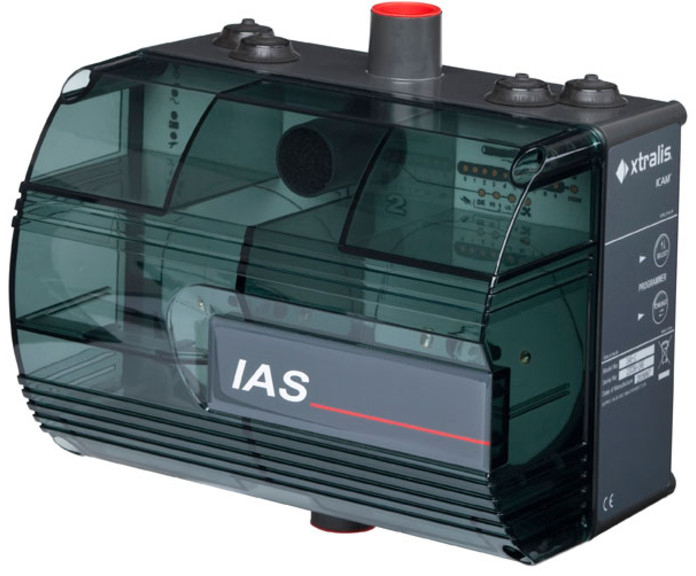The term healthcare facility typically refers to any location where healthcare is provided. There are many types of healthcare facility, including hospitals, clinics, care centres, nursing homes and many more, with each presenting a number of fire and evacuation challenges.
There are a variety of different areas and rooms inside healthcare facilities that each present unique risks, from diagnostic and testing facilities through to non-medical areas. These may include radiology rooms, pathology laboratories and MRI centres that often contain both hazardous chemical, biological or radioactive material and high-energy equipment. Non-medical areas such as shops, commercial kitchens, and maintenance facilities can pose very different fire risks.
Due to the diverse and complex nature of most medical facilities, it is essential not only that a reliable fire detection solution is in place, but that it is also capable of coping with a wide range of threats while minimising nuisance alarms.
What are the Challenges?
Healthcare facilities present many challenges across a variety of different spaces:
- Wards, Operating Theatres and Stair Cases
Wards, operating theatres and staircases are integral to the operation of a healthcare facility and play an essential role in the care and evacuation of patients. It is vital that, in the event of a fire, enough warning is provided to safely evacuate staff and patients, some of whom may be incapacitated, highly vulnerable or need to be transported with medical equipment.These areas are often open spaces with large ceiling voids which can prove challenging when rapid detection of fire is required. - Computer Rooms
Healthcare facilities often have dedicated centralised computer facilities to access medical records, assist with the operation of high-value equipment and day-to-day management of the facility.Traditional point detectors can struggle to provide reliable detection in these rooms, due to the high air-flow that cooling and ventilation requires. The high concentration of electrical wires and cabinets can also make it difficult to pinpoint the location of a fire accurately.
- MRI Facilities
Magnetic resonance imaging (MRI) facilities are used to form pictures of the anatomy in the diagnoses of some patients. MRI scanners use strong magnetic fields, electric field gradients and radio waves to generate images of the organs in the body.MRI facilities need to be clear of any metal objects. Therefore, fire detection devices that contain metallic components are not permitted.
- Laboratories, Nuclear Medicine and Sterilisation Areas
These areas often contain delicate laboratory equipment that typically combine high-cost technology with hazardous chemical, radioactive or biological equipment.A fire at locations such as these could be extremely toxic and equally as expensive. Therefore, very fast fire detection is imperative.
- Atria and Large Open Spaces
Lobbies and atriums in healthcare facilities are often architecturally impressive areas. These areas can span multiple levels with large glass windows and roofs and mezzanine floors.The aesthetics and difficult construction of these areas can make the placement and wiring of traditional smoke detection difficult.
What is the Solution?
Fire detection for healthcare facilities needs to provide a very early warning of fire and must be able to overcome some unique and challenging hurdles. The chosen fire detection system needs to be able to accommodate a variety of room types to minimise risk to patients and personnel, preserve expensive equipment and ensure smooth operation of the facility.
The fire detection system must provide unobtrusive maintenance that will not disrupt the building’s operation. The system needs to provide proper verification and mitigate nuisance alarms to avoid the need to evacuate large numbers of incapacitated, ill and vulnerable patients.
Xtralis VESDA-E Aspirating Smoke Detection

VESDA-E aspirating smoke detection provides very fast and reliable detection to protect healthcare facilities from fire and smoke. VESDA-E detectors can detect the earliest stages of fire, even in high-airflow or voluminous environments, and can be maintained from a centralised location, providing easy access and ensuring business continuity during routine maintenance.
Xtralis VESDA-VEA Aspirating Smoke Detectors

Xtralis VESDA-E VEA detectors combine the reliability of very early warning smoke detection with pinpoint addressability. By providing an accurate location at the earliest possible stage of a fire, VESDA-E VEA detectors allow time for intervention and action to eliminate or minimise the need for evacuation.
VESDA-VEA detectors use flexible microbore tubes which can be branched into equipment cabinets, air vents and ceiling voids to provide even quicker and increased location accuracy, and can safely allow the automatic release of fire or security doors along paths of egress.
Xtralis VESDA-VLF Aspirating Smoke Detectors

VESDA-VLF detectors can remotely protect high-cost equipment and are packaged with various MRI OEM parts making them safe for use in MRI facilities. Plastic aspirating tubes or pipes actively draw air from the protected area to provide an early warning of potential fire hazards.
Xtralis ICAM-IAS Aspirating Smoke Detectors

These detectors use powerful aspirators to draw air from the protected area into the detection chamber and provides fast and reliable detection for areas such as lift shafts and air vents.
OSID Open-Area Smoke Imaging Detector

In situations where very early warning is not the priority, OSID can provide cost-effective and reliable detection. OSID detectors use dual light frequencies to detect smoke and can be installed at different heights, do not require to be ceiling mounted and require minimal wiring, making them well suited to areas such as atria and lobbies.
For more information about VESDA aspirating smoke detectors, please feel free to get in touch either by phone on +44 (0) 1329 835 024, by email to [email protected] or via the online enquiry form situated on our contact page.
Don’t forget you can follow us on LinkedIn, Twitter, Facebook and Google+ or sign up to our newsletter (in the footer below) to receive all the latest information from Eurofyre.